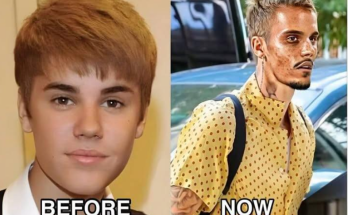The Myth About Breast Size and Genitalia: Where It Comes From and Why It’s Wrong
For many years, myths about body shape and sexuality have circulated in popular culture, gossip magazines, and online clickbait headlines. One persistent myth suggests that a woman’s breast size somehow “indicates” something about her genital anatomy, sexual activity, or fertility. This claim is completely unfounded, not supported by science, and can be harmful when repeated.
Let’s break this down carefully.
1. Why Breast Size Varies
Breast size is determined by a combination of factors:
-
Genetics: A woman inherits traits from her biological parents, including breast size, shape, and structure.
-
Hormones: Levels of estrogen and progesterone affect breast development, particularly during puberty and pregnancy.
-
Body composition: Larger breasts often result from a higher proportion of fatty tissue, not just glandular tissue.
-
Age and life stage: Breasts can change with weight fluctuations, menstrual cycles, pregnancy, breastfeeding, and menopause.
None of these factors have any connection to the size or shape of a woman’s genitalia. The external appearance of breasts is simply a reflection of individual body diversity, not an indicator of sexual characteristics elsewhere.
2. Scientific Reality of Genital Diversity
Just as breast size varies, so does vulvar and vaginal anatomy. However, these features are influenced by entirely different genetic and developmental factors.
-
Vaginal length and shape vary naturally, just like foot size or height.
-
There is no external body part that “signals” or predicts the size or shape of the vagina.
-
Myths about this often come from pornographic stereotypes or misunderstandings about human anatomy, not medical facts.
Importantly, the vagina is a muscular, elastic organ. It can expand and contract significantly (for example, during intercourse or childbirth) and does not correlate with breast size at all.
3. How Myths Like This Spread
Headlines such as “A woman’s large breasts indicate X…” are often designed to grab attention, not provide accurate information. This is known as clickbait — sensational wording meant to make people curious enough to click, share, or react emotionally.
Historically, these myths also reflect how female bodies have been objectified. Throughout history, societies have wrongly attached moral, sexual, or personality traits to women’s physical appearances. For example:
-
Larger breasts were sometimes associated with sexuality or promiscuity.
-
Smaller breasts were sometimes unfairly linked to being “less desirable” or “less feminine.”
-
Body parts were wrongly thought to reveal information about fertility or sexual behavior.
These beliefs are not grounded in any medical or scientific evidence, yet they can shape cultural attitudes and even lead to discrimination or harassment.
4. The Role of Media and Pornography
Modern media and pornography have intensified certain body stereotypes. Many people grow up seeing unrealistic body proportions in advertisements, movies, and adult content, which can distort expectations about what is “normal.”
-
Pornography often exaggerates features such as breast size, waist-to-hip ratio, or labia appearance.
-
This leads to the false belief that a certain body type is “better” or “more sexual.”
-
These ideas then circulate online, where they can be repeated without context, turning into misleading “facts.”
When people see a sensational headline like the one you shared, it can reinforce these stereotypes — even though they are false.
5. What Medical Experts Say
Medical and anatomical research consistently shows no link between breast size and vaginal anatomy or sexual activity. Professional health organizations emphasize that:
-
Breast size does not reflect a person’s sexual history, fertility, or “tightness.”
-
Vaginal size or shape is determined by internal anatomy, not external features.
-
Sexual pleasure depends on many factors — including emotional connection, consent, and individual sensitivity — not body measurements.
Doctors and gynecologists also stress that comparing body parts or making assumptions based on appearance is both medically meaningless and socially harmful.
6. Psychological and Social Impact of These Myths
These myths are not just inaccurate — they can hurt real people.
-
Body image issues: Women may feel pressured to fit into a particular “ideal” breast size or body shape.
-
Shame and self-esteem: Those who don’t match the stereotype may feel inadequate or unattractive.
-
Objectification: Reducing a person to their physical attributes contributes to sexual objectification.
-
Relationship misunderstandings: Believing myths about anatomy can create insecurity or unrealistic expectations in romantic and sexual relationships.
It’s important to promote body positivity and emphasize that everyone’s anatomy is unique, normal, and valid.
7. How to Identify and Resist Misinformation
When encountering a claim like “A woman’s large breasts indicate that her vagina…” it’s wise to ask:
-
Who is making this claim?
– Is it a credible medical source, or a clickbait headline? -
Is there scientific evidence behind it?
– Reliable medical research will cite peer-reviewed studies, not vague statements. -
Is it designed to inform or to provoke?
– Sensational language often aims to provoke emotion or attract clicks.
By learning to question the source and fact-check, we can avoid spreading misinformation that harms others.
8. Celebrating Real Diversity
Human bodies are wonderfully diverse. There’s no single “right” breast size, labia shape, vaginal length, or any other feature. Some women have small breasts, some have large — both are normal. The same applies to genitalia.
Healthy sexual relationships are built on communication, consent, and respect, not body stereotypes. Recognizing this helps dismantle harmful myths and allows people to feel more comfortable and confident in their own bodies.
✅ Key Takeaways
-
Breast size is influenced by genetics, hormones, and body composition — not genital anatomy.
-
There’s no scientific link between breast size and vaginal size or sexual behavior.
-
Myths like these come from cultural stereotypes, clickbait, and pornography, not medicine.
-
Believing or spreading these myths can harm body image and relationships.
-
Real sexual health is about respect, consent, and accurate information.
Conclusion
The statement “A woman’s large breasts indicate something about her vagina” is 100% false and rooted in outdated, sexualized stereotypes. It’s essential to challenge these myths, educate ourselves with accurate information, and respect everyone’s right to body diversity.
True beauty and worth are not measured by body parts — and our understanding of anatomy should reflect respect, not objectification.

